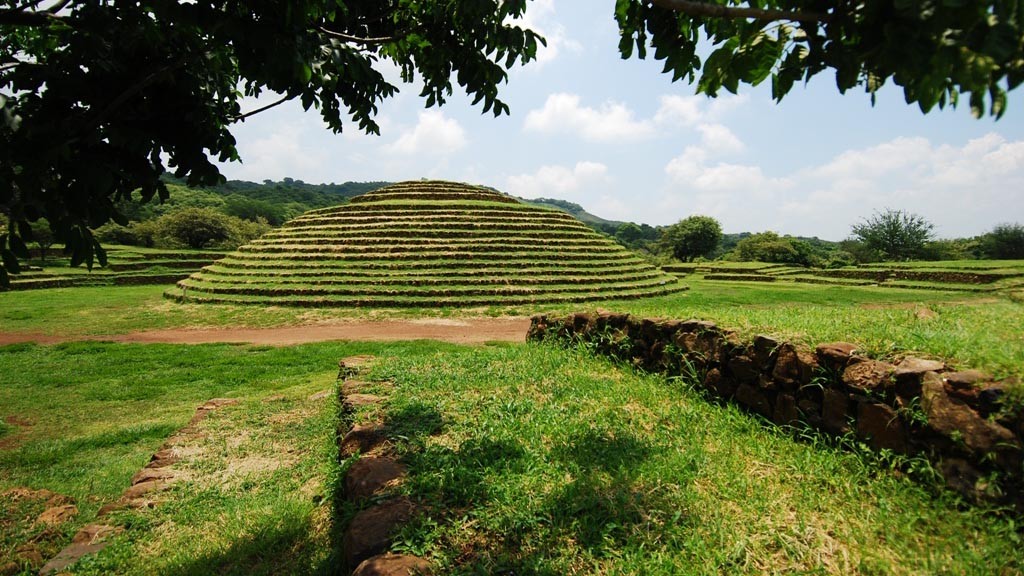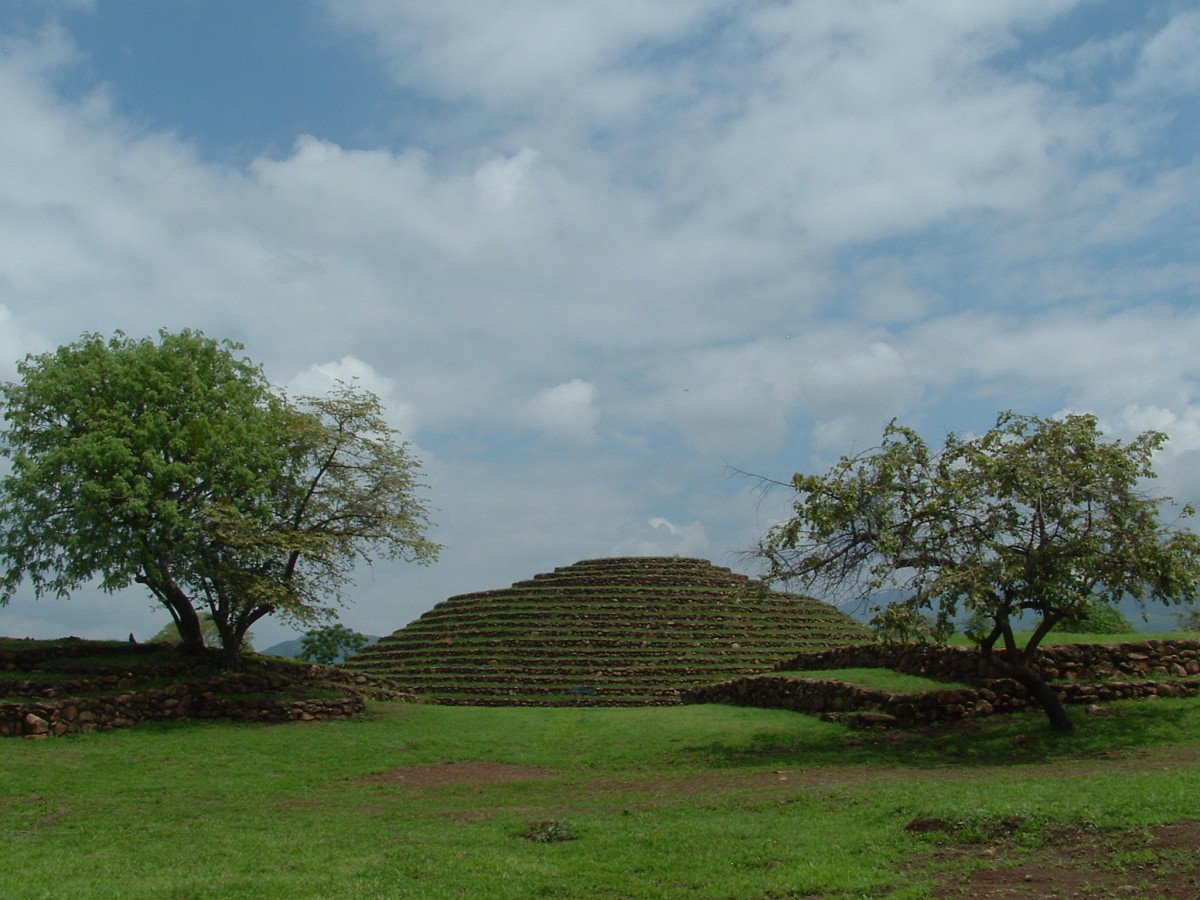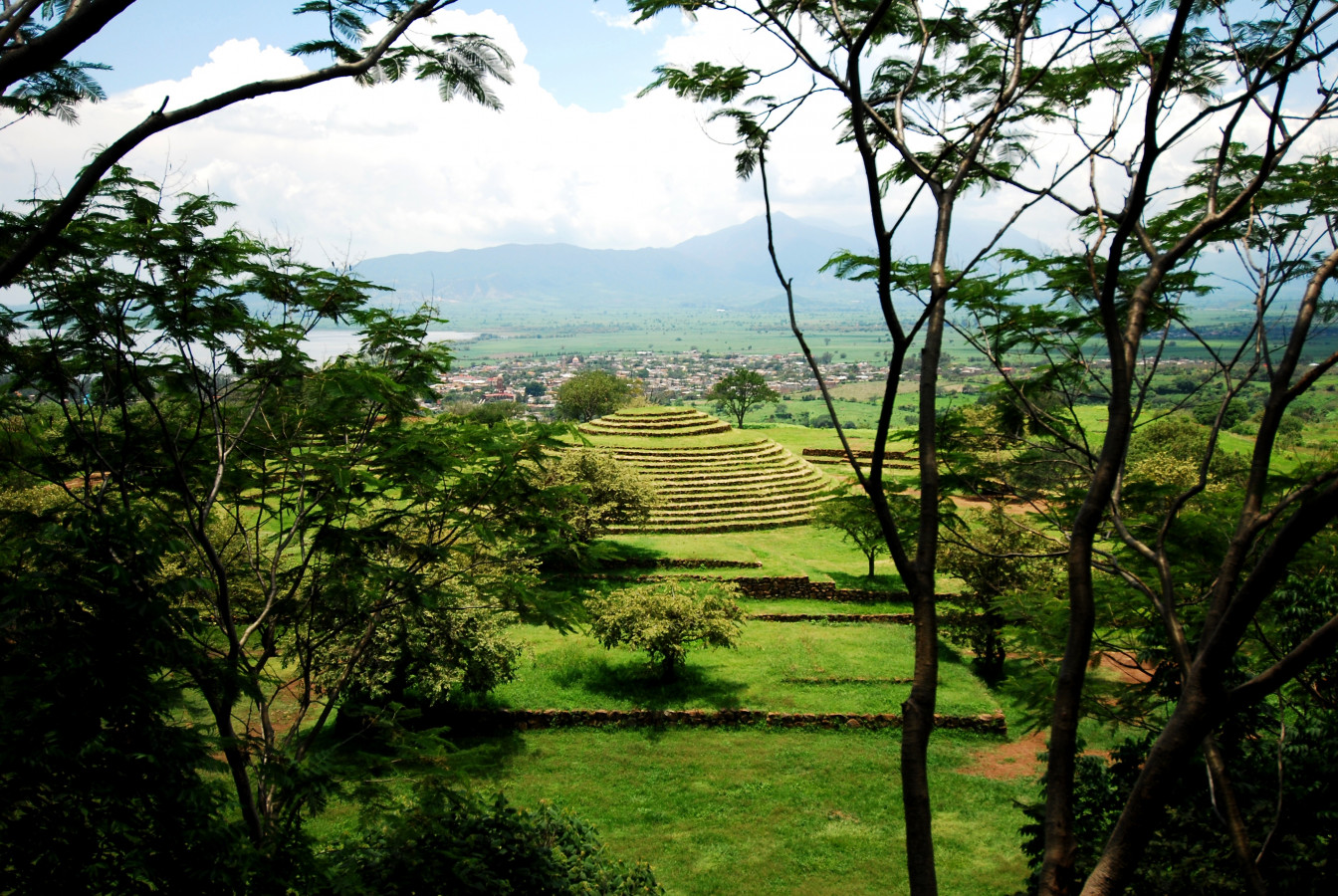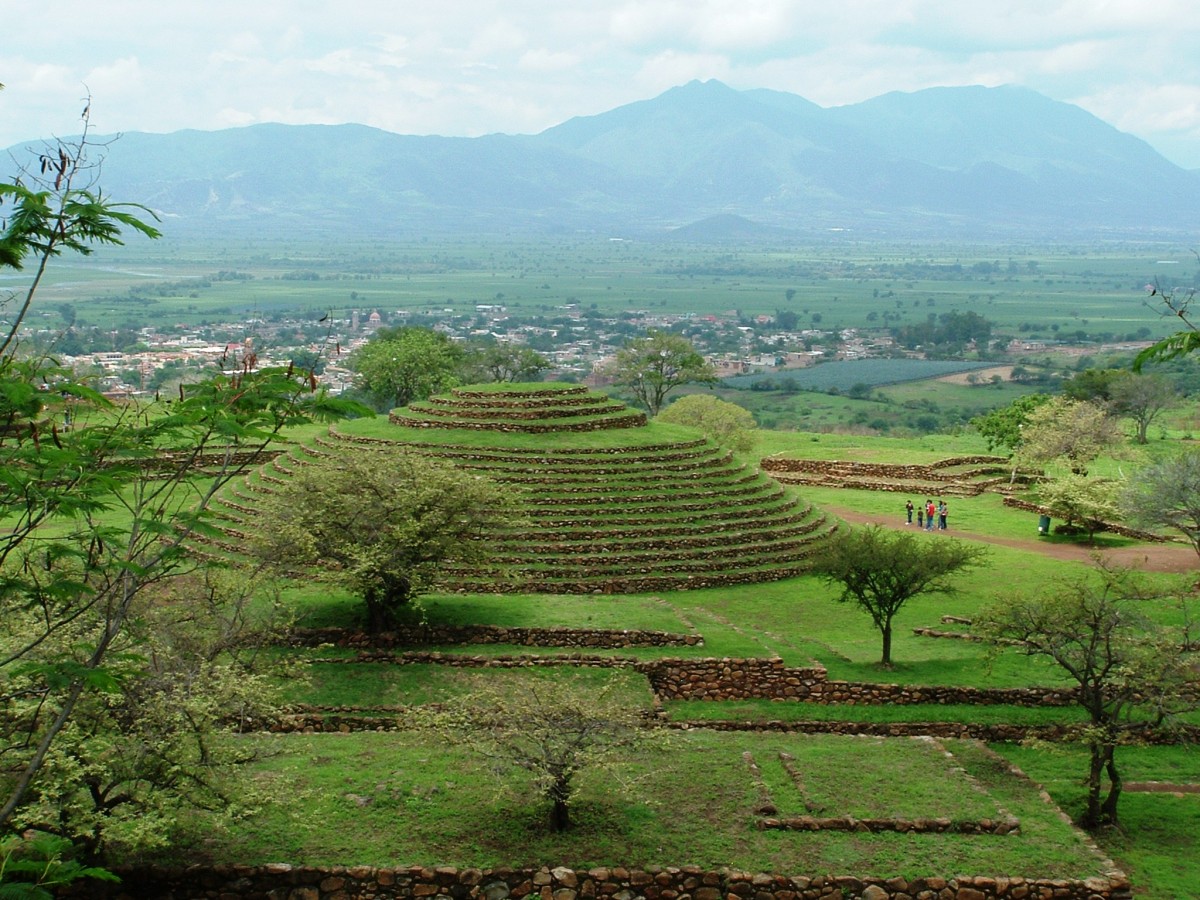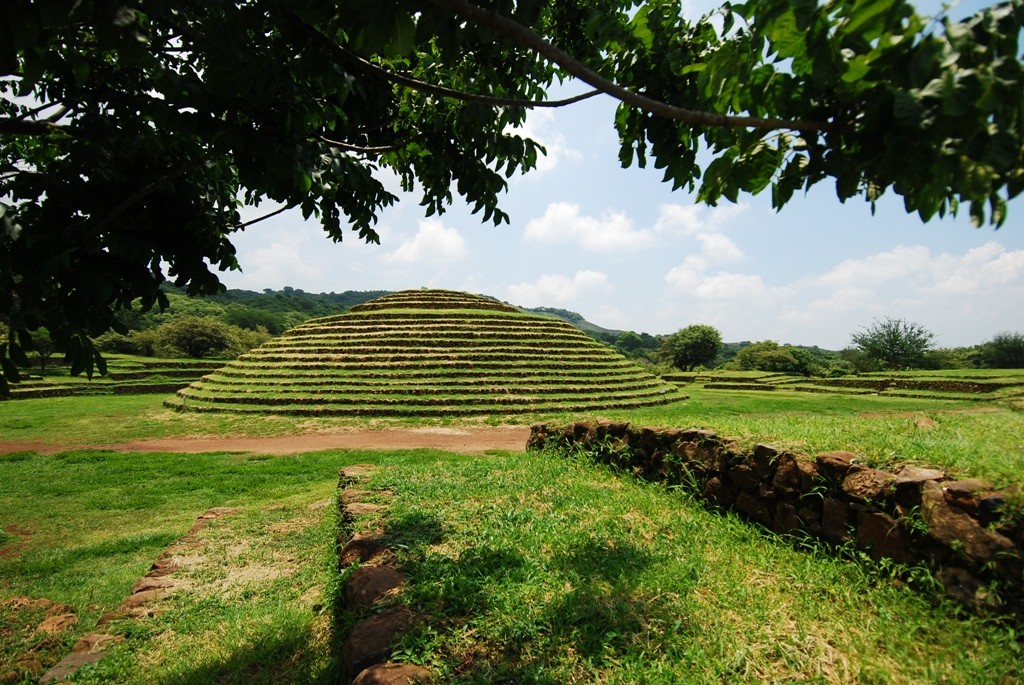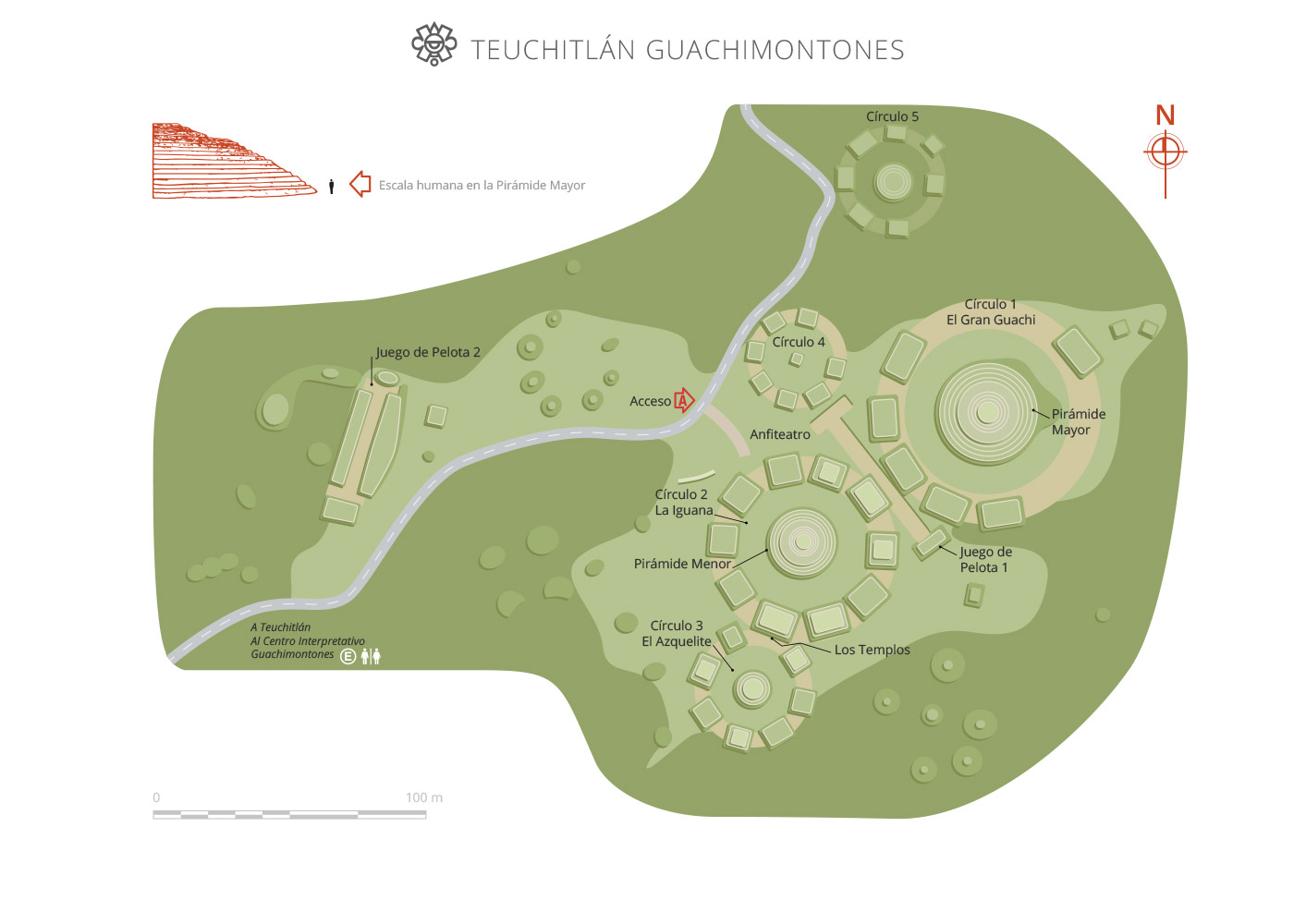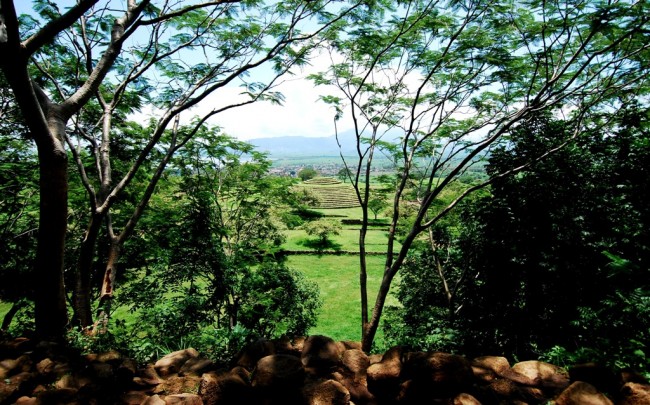Guachimontones (Teuchitlán)
Pyramid or structure
A ninety-minute drive from Guadalajara, in the region surrounding the Tequila Volcano, this was one of the most important sites in the west of Mesoamerica. Notable for its urban layout, original architecture with conical structures, broad staircases and circular elevated platforms.
About the site
This site in the state of Jalisco is known by two names: Teuchitlan, after the nearby town, and Guachimontones. It was the first great settlement in the west of Mexico and its history began around 1000 BC. The early stage was marked by the building of “El Opeño” style shaft tombs and it developed in tandem with Mesoamerican cultures.
This site covers a built area of nearly 50 acres with monumental ballcourts and five external plazas. The precinct is surrounded by groups of residential complexes which consist of 40 circular buildings with associated ballcourts. There were three types of residential units: elite residential and ceremonial areas, residential areas for high-ranking people and areas inhabited by those lower in the social hierarchy. Although the settlement pattern was widely dispersed around a core ceremonial center, the distribution of plots and architecture present indications of urban planning.
Three of the site’s structures are noteworthy: El Guachimonton, La Iguana and El Azquelite. El Guachimonton, or Circle 1, measures 410 feet in diameter and has 12 rectangular platforms, of which only five have been excavated. The center has an altar which measures approximately 165 feet in diameter while the patio surrounding extends for a further 75 feet.
La Iguana, or Circle 2, is the only structure which has been completely uncovered, with ten platforms which connect to the ballcourt.
El Azquelite, or Circle 3, measures 377 feet in diameter with an altar in the center which measures 126 feet in diameter and 33 feet in height. It has 13 steps in concentric circles leading to an upper altar. This may have been the site of a pole used in the ritual of the “voladores” (flyers).
The core of the Teuchitlan tradition developed on the highland lake shore and in the valleys adjacent to the Tequila Volcano in the west central part of the present-day state of Jalisco. Its cultural influence can be seen the length of the river Lerma, in the south of Zacatecas and throughout the lowland and coastal areas of Nayarit and Colima. It was a multicultural tradition without Olmec influence and with just a few signs of Teotihuacan influence. This cultural tradition may have ended with the arrival of the culture from the west, with its technologies such as metallurgy and bows and arrows.
This site covers a built area of nearly 50 acres with monumental ballcourts and five external plazas. The precinct is surrounded by groups of residential complexes which consist of 40 circular buildings with associated ballcourts. There were three types of residential units: elite residential and ceremonial areas, residential areas for high-ranking people and areas inhabited by those lower in the social hierarchy. Although the settlement pattern was widely dispersed around a core ceremonial center, the distribution of plots and architecture present indications of urban planning.
Three of the site’s structures are noteworthy: El Guachimonton, La Iguana and El Azquelite. El Guachimonton, or Circle 1, measures 410 feet in diameter and has 12 rectangular platforms, of which only five have been excavated. The center has an altar which measures approximately 165 feet in diameter while the patio surrounding extends for a further 75 feet.
La Iguana, or Circle 2, is the only structure which has been completely uncovered, with ten platforms which connect to the ballcourt.
El Azquelite, or Circle 3, measures 377 feet in diameter with an altar in the center which measures 126 feet in diameter and 33 feet in height. It has 13 steps in concentric circles leading to an upper altar. This may have been the site of a pole used in the ritual of the “voladores” (flyers).
The core of the Teuchitlan tradition developed on the highland lake shore and in the valleys adjacent to the Tequila Volcano in the west central part of the present-day state of Jalisco. Its cultural influence can be seen the length of the river Lerma, in the south of Zacatecas and throughout the lowland and coastal areas of Nayarit and Colima. It was a multicultural tradition without Olmec influence and with just a few signs of Teotihuacan influence. This cultural tradition may have ended with the arrival of the culture from the west, with its technologies such as metallurgy and bows and arrows.
Map
-
+52 (333) 613 1075
-
This email address is being protected from spambots. You need JavaScript enabled to view it.
Directory
Encargado
Centro INAH Jalisco
+52 (333) 614 5416

